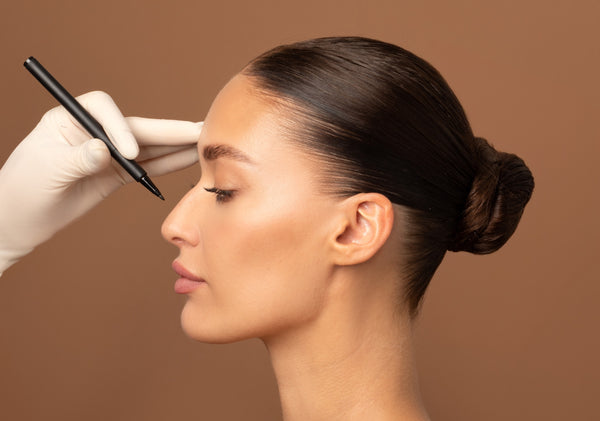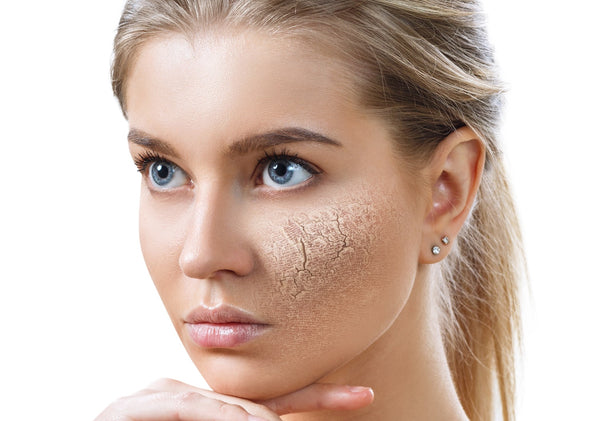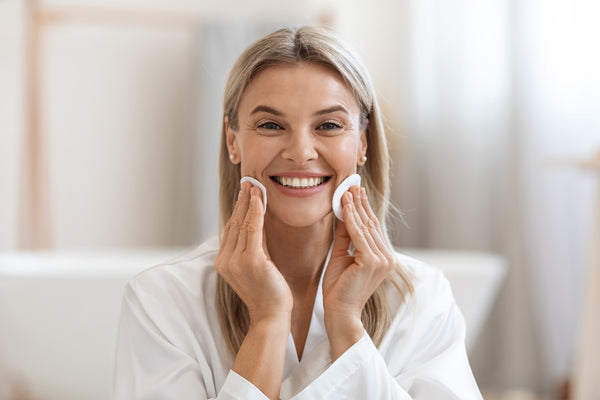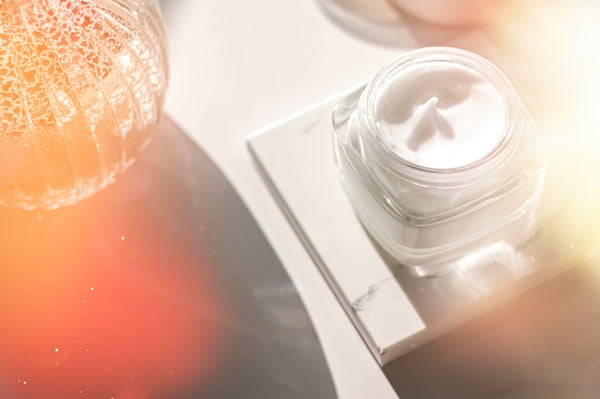When to Throw Away Makeup and Skincare Products?

How Long Does It Last? – When to Throw Away Makeup and Skincare Products
Beauty products are quite common in most households these days. Unlike other skincare products, makeup products are usually affordable and come in varieties to suit people of different skin types. This has led to people buying a lot of makeup but sometimes fail to use entirely.
Many of us keep products we hardly use, but hoarding perishable goods come with a few challenges. For example, the product can lose quality or might harm your skin if it is expired. Unfortunately, only a few people know when to dispose of their old makeup and skincare products since they only consider the expiration date on the package. Therefore, we found it suitable to come up with this article to help people identify the best time to throw away old makeup and skincare products.
How Long Should Your Makeup Last? 
High-quality makeup and skin products from renowned and established brands are durable and have minimal side effects. However, like other products, makeup also has a limited lifespan. Expired or contaminated makeup may trigger an allergic reaction or cause skin irritation.
Does your makeup smell odd or different from when you first purchased it? Does the texture of the cream seem off? If so, it may be time to throw it out.
When to Throw Your Beauty Products Away
Company-sealed makeup and skincare products can remain fresh for a while when stored at room temperature. However, after unsealing, air enters the formula and reacts with some of the ingredients, causing the product to go bad.
Natural factors such as oxidation, heat, and humidity may seem harmless but are common causes for these products going bad. Below are a few common examples of makeup and skincare products, their shelf life, and when to throw them away.

-
Face Makeup
There are two common types of face makeup; liquid and powder.
• Liquid Foundation
The longer you use makeup, the higher the chances of it getting infected with bacteria. A good example is a liquid face makeup foundation. When dipping our fingers in, we transfer bacteria from our hands into the makeup we use. Bacteria is bad for our skin as it causes skin irritation or breakouts in people.
Time also affects the quality of liquid makeup foundation as it can cause its oil to rise and thicken. If you use the dabbing technique when applying makeup, consider replacing your makeup every six months or less. Pump makeup can last longer before going bad (at least eight months).
• Powder Foundation and Blush/Bronzer
Powder form face makeup is not good to use for longer than two years. First, it doesn't contain water, so it’s less prone to bacteria but will depreciate with time. It contains ingredients such as aloe/jojoba, which tend to crumble after losing the little moisture content it has to evaporation. You can still manage to extend the lifespan of your powder foundation for a period longer than two years, but that will require you to practice proper care that involves using clean brushes.
-
Mascara
A mascara tube is wet and, therefore, a perfect breeding ground for bacteria. Although there are preservatives to help extend their lifespan, many mascara products have a short lifespan once opened and will be unfit for use after 3-6 months. You can tell if your mascara has gone for too long and needs replacing when it becomes chalky and powdery, which makes it difficult to apply. A good tip to help your mascara last a bit longer is not to pump the wand, as that only causes the mascara to dry out faster. Instead, draw out and turn the brush slowly to remove the product.

-
Eyeliner and Shadow
Like mascara, bacteria also flourish in liquid eyeliner tubes because it is watery. However, pencil eyeliners are usually more durable, and sharpening them is usually enough to create a fresh, clean surface (regularly apply rubbing alcohol on the pencil sharpener to sanitize it).
Powder eye shadows (pressed powders) don’t contaminate easily since they don’t contain water which usually invites bacteria. Nonetheless, eye shadows will depreciate with time, meaning they won’t be as good as it was when new. They are also hard to pick up with the brush since their pigment is compressed.
We recommend replacing your eyeliners and shadows every year. However, it would be best to get rid of liquid eyeliner earlier, in 3 months or less, since they are susceptible to germs and bacteria. Important to note: get rid of your eyeliner soon as it starts showing signs of going bad. You can tell if your eyeliner is contaminated by checking for changes in odor and texture. Continued use of contaminated eyeliners can increase the risk of an eye infection.
-
Concealer
Do you have a concealer you haven’t used for a year since opening it? It's time to let it go. A concealer should be disposed of a year after use. If you use a stick or pan formula, you can tell if your concealer has gone bad by checking for cracks. Also, take note of other changes. Has it become tough or elastic-like? If you use a liquid concealer, check if it appears oily, separated, or smells rancid. If there are any of these changes to the concealer, throw it away immediately. We recommend keeping your hands out of the concealer's pan and tightly screwing the lid after use to save it from spoiling early.
-
Lipstick and Lip Liner
The water in lipstick products makes them suitable for bacteria. If you haven't used your lipstick for a while, replace it with a new one. You can tell when it’s time to dispose of your lipstick or lip liner by noticing its appearance change. A creamy appearance is a good sign that your lipstick is still good. Generally, your lipstick should be safe to use for at least eight months, unless it smells rubbery, appears sticky, or no longer applies to your lips. Longwearing lipstick and lip liner formulas have an even shorter lifespan since they contain ingredients that evaporate quickly. That said, pencil lip liners may last longer than their counterparts since we can sharpen them to restore them.

-
Skin Care Products
Like other cosmetic products, skin care products also have a limited shelf life and must be replaced regularly. An easy way to tell if your skin care products need replacing is to check for a small image, usually located at the bottom of the bottle or container. You'll commonly find numbers ranging from 12, 24, to 36. These numbers shouldn't be mistaken for the expiration date since they represent the period you can keep using the product after opening. Below are a few examples of common skin care products and when to replace them after use:
-
Cleansers: Oil and Water-Based
Oil is not conducive for bacteria to thrive, giving oil cleansers an edge over water-based cleansers. Oil cleansers, specifically those stored in a jar, can separate more easily when exposed to oxygen in the air for a while. If you've been using an oil-based cleanser, look out for changes in smell and texture, as it may have started to go bad. Pump-based oil cleansers are usually better at maintaining their freshness since they don’t let in too much air.
Water-based cleansers are also quite popular, but their high moisture content makes them a good breeding ground for bacteria. We don’t recommend using water-based cleansers for more than 6 to 8 months. However, if your cleanser has ingredients such as salicylic acid and glycolic, it can make it unfavorable for bacteria to thrive and may help your cleanser last longer.
-
Vitamin C
Vitamin C is a very good antioxidant; that's why you'll often find it an ingredient in many skincare and beauty products. Most vitamin C products are kept in dark or opaque bottles to limit their exposure to light. Pure vitamin C serum should be clear; if yours looks brownish or orange, you may need to throw it away unless the manufacturer added the tint intentionally to hide oxidization. A color change symbolizes that the product has oxidized and can no longer retain its antioxidant benefits.

-
Moisturizers
The rule of thumb for moisturizers and eye creams is to toss them a year after use. However, things are different for moisturizers kept in jars since they make it easier for oxygen to find its way inside. It's for that reason that jar moisturizers should be tossed earlier; that is, within six months of unsealing. Instead, go for pump-based moisturizers since they are more airtight.
-
Sunscreen
Sunscreen products are regulated by the FDA and some may bear an expiration date, but are required to remain at their original strength for up to three years. The expiration date indicates the time frame before the product has been unsealed and tempered. Once you unseal and start using the product, evaporation will begin, which may cause the formula to become unstable quickly. When it happens, the ingredients inside are affected, leading to an uneven distribution when the tube is squeezed. Sunscreen is good to use for about six months; ensure you preserve yours properly by not storing it openly in the sun.

-
Nail Polish
Nail polish is another popular beauty product with a limited shelf life. When it expires, the polish loses consistency causing it to turn stringy or gooey. Nail polish formulas are also sensitive to humidity and extreme temperatures, so we don't recommend storing them in the bathroom. The average lifespan of nail polish is about 1 to 2 years, so get rid of yours if it stays with you longer.
-
Hair Products
There are various types of hair products, from shampoos to conditioners. Although many people own these products, only a few know when to dispose of them, especially since hair products are not mandated by law to have an expiration date. The good thing about hair products is that they have a longer shelf life compared to other beauty products. For instance, many unsealed hair products can be kept for up to 3 years when kept in a cool, dry place.
Hair product manufacturers usually compensate for the lack of an expiration date by stamping their products with a PAO, which stands for Period After Opening. The PAO label is placed on the bottle to indicate how long the hair product can be used after it has been opened. You can find this label on the bottom right corner of the hair product bottle. It is usually a small square and contains a number followed by "M." The M shows how many months you can use the product after unsealing.
The general rule of thumb applies to hair products as well, so ensure you check the product's color and scent to confirm it's still good for use. Non-aerosol hair products have an average lifespan of 12 to 18 months, while aerosol ones like dry shampoos have a longer lifespan due to limited exposure to air. To ensure your hair product, whether shampoo or conditioner lasts longer, limit the amount of air entering the product by tightly closing the cap after use. Remember to store your shampoo or conditioner in a cool, dry place, away from direct sunlight.
Can I Still Use Expired Hair Products?
We don't recommend using any expired makeup, including hair or skincare products. Even though expired hair products rarely pose significant harm, their effectiveness may reduce significantly, making them unfit for use. Furthermore, beauty products can be exposed to bacteria after expiring, making them harmful to your skin.
Tips to Help You Track the Expiration and PAO Date of Hair Products
The last thing we expect any of you to remember is the expiration and PAO dates on your beauty products. There is just so much going on in most people's lives for them to remember. For that reason, we came up with tips to help you track your makeup and beauty products' expiration dates. Use any of the tips below:
- Write down the purchase and open date of makeup products you purchase in a notebook or journal for future reference
- Use a piece of tape to document each products purchase and unseal date and place it on the products container or bottle
- Download and use mobile apps to track the expiration dates of any makeup product you purchase. Most manufacturers put a QR code on their products which you can scan with your phone to confirm if they are genuine and check expiration and PAO dates.
Conclusion
Makeup and skincare products have a limited shelf life and should be replaced regularly to work effectively. Although most manufacturers put a POA and expiration date on their products, other factors can cause this product to go bad sooner than expected. Use the information given in this article to know when it’s time to throw out your old makeup.












